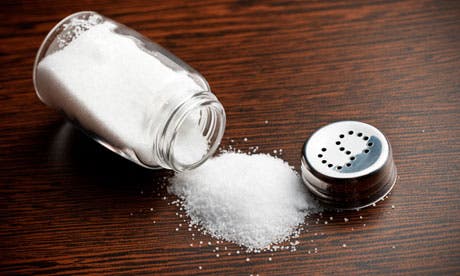
A group of international researchers have demonstrated a novel technique for destroying cancer cells. By inserting a chloride payload that penetrates the cancer cell’s sodium membrane, the cells become flushed with salt causing a self-destruction response. The challenges of making this kind of drug work effectively are many (i.e. only attack cancer cells and leave healthy cells be), yet if these are met a new and effective way to battle cancer may be at our disposal.
A dash of salt and voila!
“This work shows how chloride transporters can work with sodium channels in cell membranes to cause an influx of salt into a cell,” says the University of Southampton’s Professor Phillip Gale, one of the study’s co-authors. “We found we can trigger cell death with salt.”
Cells rely on ion regulation within their membranes for survival, and an upset of this delicate balance can cause them to self-destruct. This process is known as apoptosis, and it’s basically the body’s way of disposing of abnormal cells that might threaten normally functioning cells. With good reason, apoptosis has been identified as a useful mechanism for targeting cancer cells. We’ve already written about several attempts, like the one that delivers carefully targeted nanoparticles to kill cancer. Other efforts used DNA nanodevices that escape the immune system, which would otherwise destroy the treatment if it discovered the foreign object, and hone in on leukaemia and lymphoma cells to activate the suicide switch.
[ALSO READ] Potential ‘universal’ cancer blood test
This chloride-carrying device is the first attempt of its kind, demonstrating how salts can kill cancer cells. The researchers note that it could very well be used against cystic fibrosis as well.
By binding to chloride ions in the cell’s membrane, the molecule then draws on the membrane’s sodium channels, creating a blanket surrounding the ion and causing it to dissolve. Initially, this was tested on an artificial membrane model, but successful results were replicated in genuine human cultured cells.
“We have thus closed the loop and shown that this mechanism of chloride influx into the cell by a synthetic transporter does indeed trigger apoptosis,” said Professor Jonathan Sessler from the University of Texas and one of the study’s co-authors. “This is exciting because it points the way towards a new approach to anticancer drug development.”
[RELATED] New drug literally blows up the most aggressive cancer
There’s one big fault in the process, however: the ion imbalance affects cancer and healthy cells alike, without discrimination. Researchers need to find a way to exclusively target cancer cells and leave the healthy variety in peace.
Findings appeared in Nature Chemistry.
Was this helpful?



